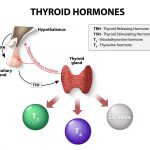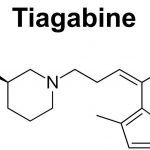
Contents
- 1 What Is the Life Expectancy of Someone With Lou Gehrig’s Disease (ALS)?
- 1.0.1 What is Lou Gehrig’s disease?
- 1.0.2 What are different types of Lou Gehrig’s disease?
- 1.0.3 What causes Lou Gehrig’s disease?
- 1.0.4 What are risk factors for Lou Gehrig’s disease?
- 1.0.5 What are the symptoms of Lou Gehrig’s disease?
- 1.0.6 How is Lou Gehrig’s disease diagnosed?
- 1.0.7 How is Lou Gehrig’s disease treated?
What Is the Life Expectancy of Someone With Lou Gehrig’s Disease (ALS)?
Lou Gehrig’s disease or amyotrophic lateral sclerosis (ALS) is a rare neurological disease that primarily affects the motor neurons (nerve cells) that control voluntary muscle movements. Voluntary muscles produce movements such as chewing, talking, and moving arms and legs.
The average life expectancy of someone with Lou Gehrig’s disease or ALS is 2-5 years. However, with early diagnosis and appropriate treatment, some people may live for 10 years or longer.
What is Lou Gehrig’s disease?
Lou Gehrig’s disease is a progressive disease caused by gradual degeneration and death of motor neurons.
Motor neurons extend from the brain to the spinal cord and muscles throughout the body. When these motor neurons degenerate, they stop sending messages to the muscles, gradually weakening them and leading to fasciculations (twitch) and atrophy (reduction in size or wasting away of a body part or tissue).
Eventually, the brain loses its ability to initiate and control voluntary movements, and there is a decline in the ability to talk, write, pick up or hold things, swallow, and breathe.
Two types of motor neurons include:
- Upper motor neurons: Present in the brain and spinal cord and responsible for sending signals to the lower motor neurons
- Lower motor neurons: Present in the brain stem and spinal cord and responsible for receiving instructions from the upper motor neurons and forwarding them to the muscles
A person may experience different symptoms depending on whether upper or lower motor neurons are affected. Upper motor neuron involvement usually causes muscle stiffening, whereas lower motor neuron involvement causes loss of muscle tone. In most cases, ALS affects both upper and lower motor neurons.
What are different types of Lou Gehrig’s disease?
- Classical amyotrophic lateral sclerosis (ALS): Most common type that affects more than two-thirds of people with ALS and causes decline in both upper and lower motor neurons
- Progressive bulbar palsy: Affects about 25% of people with ALS and starts with speaking, chewing, and swallowing difficulties caused by breakdown of the upper and lower motor neurons in the mouth and throat.
- Progressive muscular atrophy: Affects only the lower motor neurons
- Primary lateral sclerosis: The rarest form of ALS, in which only the upper motor neurons decline
What causes Lou Gehrig’s disease?
The exact cause of ALS is unknown. However, scientific evidence suggests that both genetics and environment play a role in motor neuron degeneration and the development of the condition:
- Genetics: Scientists supported by the National Institute of Neurological Disorders and Stroke have discovered that mutations in the SOD1 gene are associated with cases of familial amyotrophic lateral sclerosis.
- Environmental factors: Environmental factors, such as exposure to toxins or infectious agents, viruses, physical trauma, diet, and behavioral and occupational factors can contribute to the development or progression of the disease.
What are risk factors for Lou Gehrig’s disease?
Risk factors for ALS include:
- Age: Although the disease can strike at any age, symptoms most commonly develop between the ages of 55 and 75 years.
- Gender: Men are slightly more likely than women to develop ALS.
- Race/ethnicity: Caucasians and non-Hispanics are more likely to develop ALS than people of other races.
- Occupational exposure: Some studies suggest that military veterans are about 1.5 to 2 times more likely to develop ALS due to exposure to lead, pesticides, and other environmental toxins during their service.
QUESTION
What are the symptoms of Lou Gehrig’s disease?
The first sign of ALS usually appears in the hand or arm and may present as difficulty with simple tasks such as buttoning a shirt, writing, or turning a key in a lock.
Early signs usually include muscle weakness or stiffness of the muscles under voluntary control. The person may lose strength and ability to eat, speak, grasp things, move, and even breathe. In other cases, symptoms initially affect one leg. People experience awkwardness when walking or running, or they may trip or stumble more often.
When symptoms begin in the arms or legs, it is referred to as limb onset ALS, and when individuals first notice speech or swallowing problems, it is called bulbar onset ALS.
Early symptoms of ALS may include:
- Muscle weakness that affects an arm, a leg, the neck, or the diaphragm
- Muscle cramps or twitches in the arm, leg, shoulder, or tongue
- Spasticity (tight, stiff muscles)
- Slurred and nasal speech
- Difficulty chewing or swallowing
- Fatigue
As the disease progresses, muscle weakness and atrophy spread to other parts of the body, leading to:
- Difficulty moving
- Dysphagia (difficulty swallowing)
- Dysarthria (difficulty speaking or forming words)
- Dyspnea (difficulty breathing)
Pulmonary problems associated with ALS include:
- Shortness of breath, even at rest
- Weak cough
- Difficulty clearing the throat and lungs
- Increased salivation
- Inability to lie flat on the back
- Recurring chest infections and pneumonia
- Respiratory failure
People with Lou Gehrig’s disease may eventually lose the ability to breathe on their own and will need to depend on a ventilator. Most people with ALS die from respiratory failure.
Because individuals with Lou Gehrig’s disease have difficulty swallowing and chewing food and a faster calorie-burning rate, they tend to lose weight rapidly and become malnourished. Over 3-5 years, the disease progresses, making voluntary movements of arms and legs impossible.
How is Lou Gehrig’s disease diagnosed?
There is no single test that can provide a definitive diagnosis of ALS. Diagnosis is primarily based on a detailed history of the symptoms observed during physical examination, along with a review of the individual’s full medical history and a series of tests to rule out other diseases.
In addition to blood and urine tests, the following tests may be ordered to confirm a diagnosis:
- Neurologic examination: Tests for reflexes and analyzes symptoms such as muscle weakness, muscle wasting, and spasticity
- Electromyography: Detects the electrical activity of muscle fibers and nerves
- Nerve conduction study: Measures the nerve’s ability to send signals to the muscle
- MRI: Uses a magnetic field and radio waves to produce detailed images of the brain and spinal cord
- Muscle biopsy: Analyzes tissue samples of the muscles or nerves
- Spinal fluid test: Analyzes spinal fluid to help diagnose brain and spinal cord problems
How is Lou Gehrig’s disease treated?
Currently, there is no cure for ALS and no effective treatment to halt or reverse the progression of the disease. Generally, treatments may include:
- Medications: FDA-approved drugs to treat ALS include Rilutek (riluzole) and Radicava (edaravone); medications may also be prescribed to help manage symptoms of muscle cramps, stiffness, excess saliva, and phlegm
- Physical and occupational therapy: To ease discomfort from stiff muscles, cramps, and fluid retention
- Nutritional support: To help the person maintain a healthy, balanced diet
- Speech therapy: Communication training to help maintain verbal communication
- Assistive devices: Splints, braces, grab bars, and reach devices to help the person stay independent
- Special equipment: Wheelchairs and electric beds to help the person function independently


